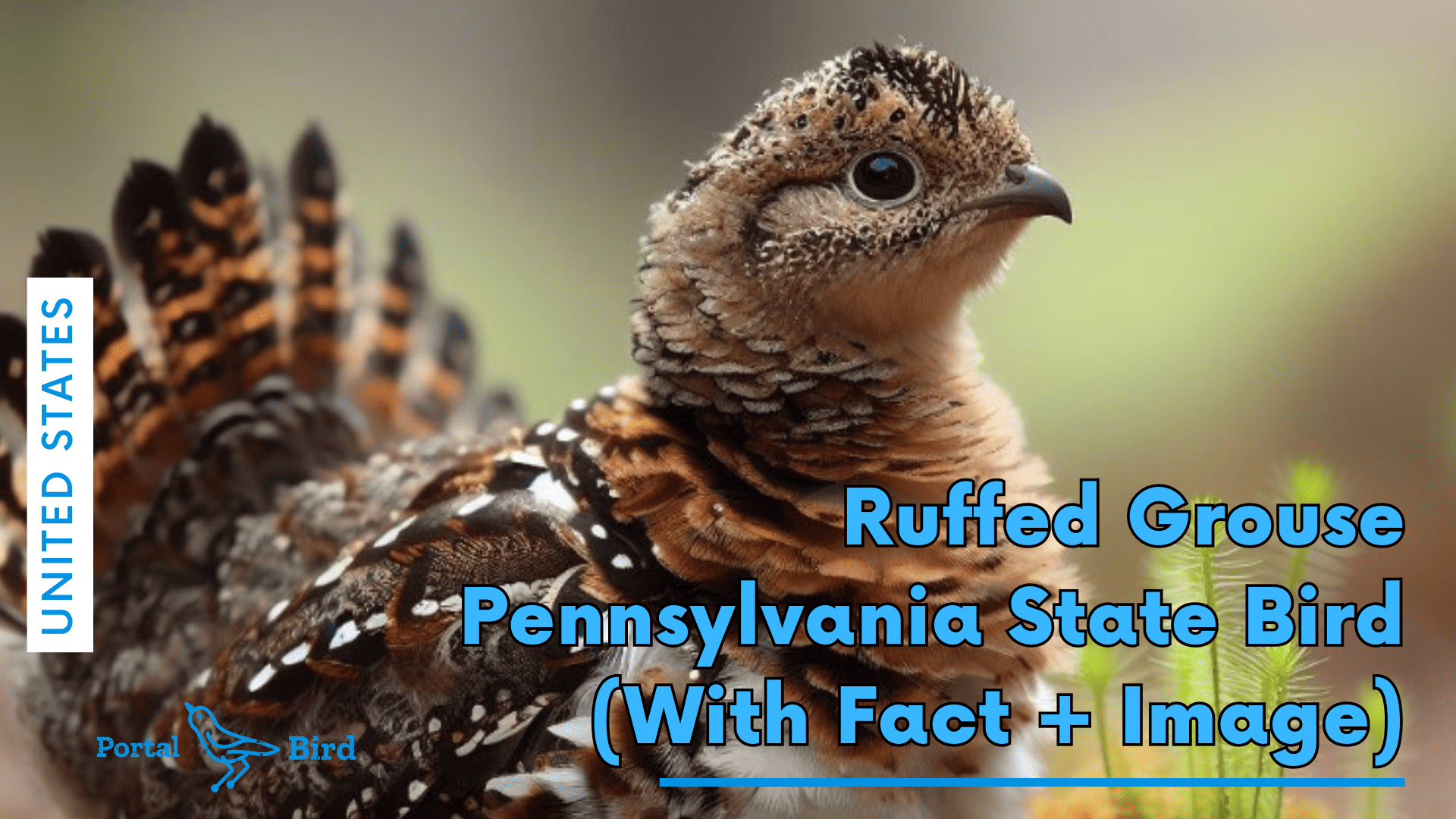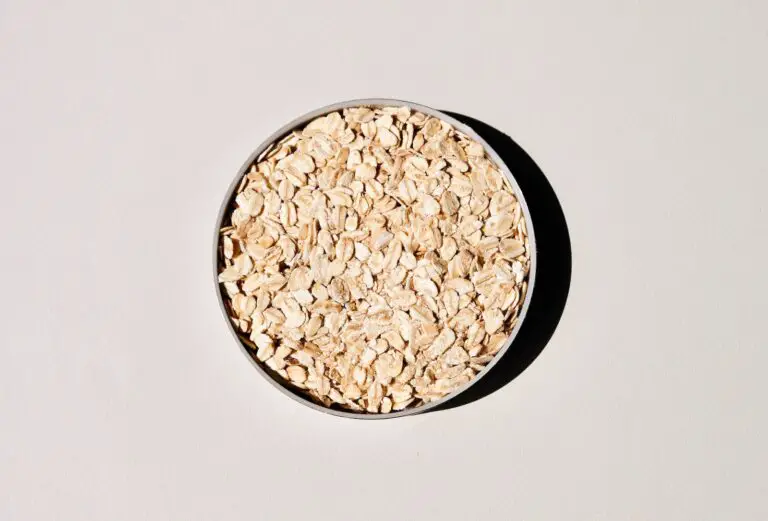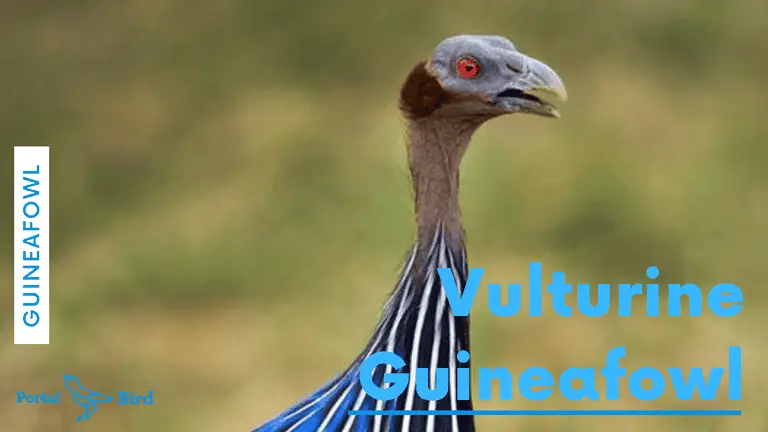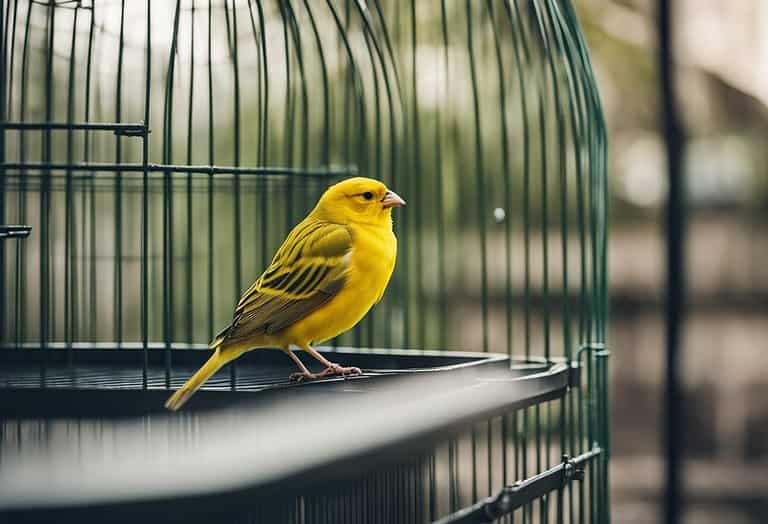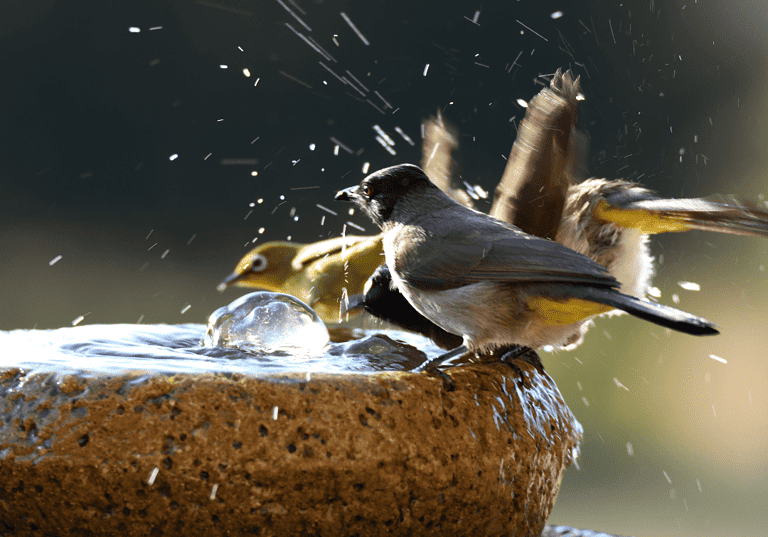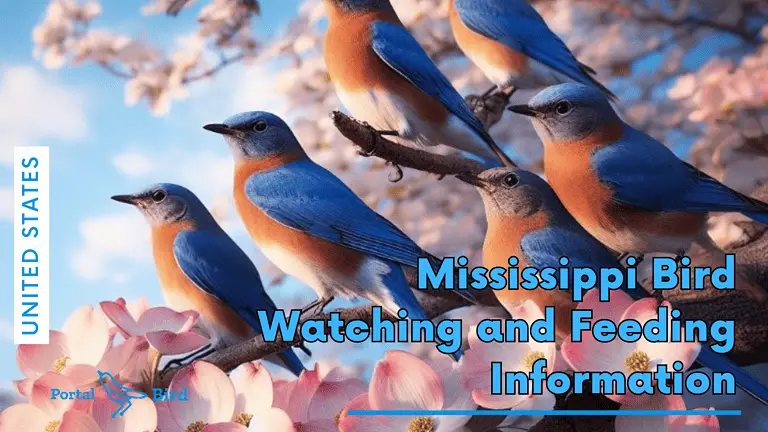Ruffed Grouse – Pennsylvania State Bird (With Fact + Image)
The Ruffed Grouse holds the distinguished title of Pennsylvania State Bird. This medium-sized grouse inhabits forests across the state and has served as an important food source and game animal for Pennsylvania’s settlers since colonial times. Let’s take a closer look at why this elusive bird came to be chosen as the Pennsylvania State Bird and examine some of its most interesting traits and behaviors.
With its unique drumming displays, cryptic plumage, and adaptation to the diverse woodlands of the Keystone State, the Ruffed Grouse makes a fitting representative of Pennsylvania’s natural heritage. Learning about the Ruffed Grouse provides insight into the state’s history, wildlife, and landscapes.
Background on the Ruffed Grouse
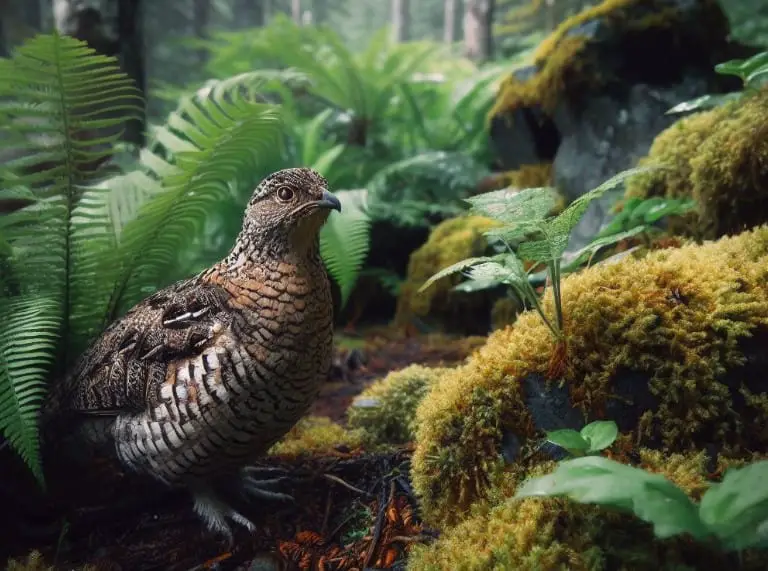
The Ruffed Grouse (Bonasa umbellus) was designated the state game bird of Pennsylvania back in 1931. However, these birds have been present across the state for much longer.
Some key facts about the Ruffed Grouse:
- Scientific name: Bonasa umbellus
- Average size: 16-20 inches long; 1-1.5 lbs
- Found across most of North America
- Prefers young forests with dense cover
- Male performs unique drumming display
- Diet consists of buds, fruits, seeds, and insects
- Average lifespan is 1-3 years
The Ruffed Grouse is well-adapted to Pennsylvania’s mix of woodlands and shrublands. Their populations remain healthy across most of the state.
Why Was the Ruffed Grouse Chosen?
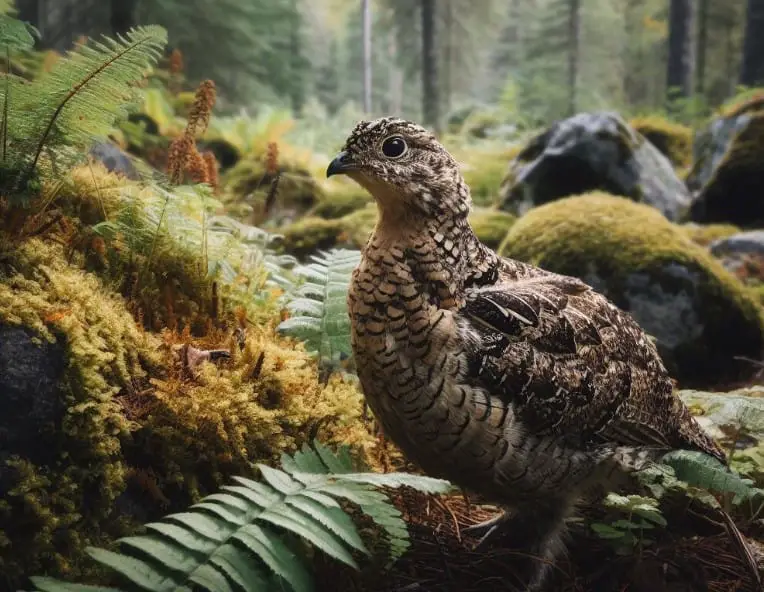
The Ruffed Grouse was likely chosen for its cultural significance and ubiquity across Pennsylvania.
As one of the most common and widespread game birds in the state, the Ruffed Grouse provided an important food staple for Native Americans and European settlers. Hunting them helped sustain communities through harsh winters.
They can be found in forests from the Allegheny Mountains to the woodlands of central Pennsylvania. Their steady drumming sounds became a characteristic feature of springtime in the woods.
Even today, the Ruffed Grouse remains popular among hunters in Pennsylvania. Around 150,000 are harvested each year during the hunting season.
Naming this resourceful bird the state game bird recognized its cultural history and ongoing recreational value.
Identifying the Ruffed Grouse
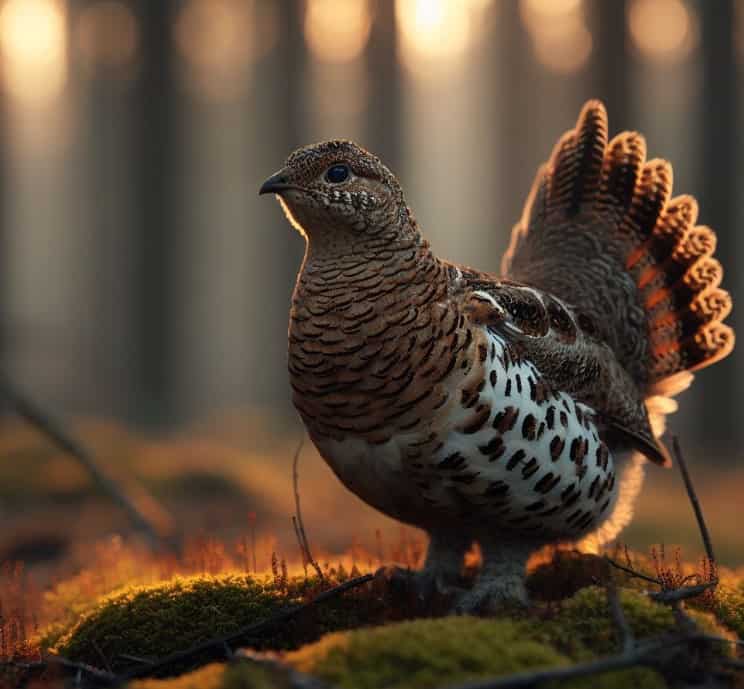
The Ruffed Grouse can be tricky to spot among the trees and brush. Here are some tips for identification:
Size and Shape
- Medium-sized, plump bird
- Round body shape
- Short neck and fan-shaped tail
- Males weigh 1-1.5 lbs; females weigh 15-26 oz
- 16-20 inches in total length
They are smaller and stockier than Wild Turkeys. Watch for their short, rounded wings in flight.
Plumage and Markings
- Black and brown mottled plumage overall
- Dark ruff of feathers on sides of neck
- Bold black band near tip of grayish tail
- White below tail, with fine barring on belly
- Reddish or grayish variations between individuals
The ruff on the male’s neck disappears outside of breeding season. Look for the broad tail band and mottled back feathers.
Behavior and Sounds
- spends most of time on forest floor
- freezes and flushes suddenly when startled
- drumming display sounds like muffled thumping
- other calls include clucks, hoots, squeals
Stop and listen for the male’s distinctive drumming sound, like a muffled motor, in spring.
Interesting Facts about the Ruffed Grouse
Living closely alongside these birds for centuries, Pennsylvania residents have made many observations about the Ruffed Grouse’s habits and traits.
Here are some of the more fascinating bits of Ruffed Grouse lore and biology:
- Dramatic drumming display – To attract females in spring, the male stands on a log and rapidly beats his wings to produce a thumping sound that can carry over 0.5 miles.
- Cloven feet – Their feet have a comblike fringe of scales along the toes that provides traction and acts like snowshoes in winter.
- Nest and eggs – The female builds a nest of leaves, grass, and feathers on the ground and lays around 12 eggs. The chicks can fly short distances just 2 weeks after hatching.
- Biting buds – Ruffed Grouse are one of just a few bird species able to digest the buds of aspens and other trees. This provides food even in winter.
- Whirling descent – When startled, they may take off vertically in a burst then spiral downwards through the trees, making them tough targets.
- Cryptic coloring – Their brown, gray, and black mottled feathers provide camouflage in the dappled light of the forest.
- Bonasa – Their genus name comes from the Latin for ‘good when roasted’, referring to their popularity as game.
The Ruffed Grouse epitomizes the adaptation and survival strategies of wildlife in Pennsylvania’s forests.
Habitat and Behavior Pennsylvania State Bird
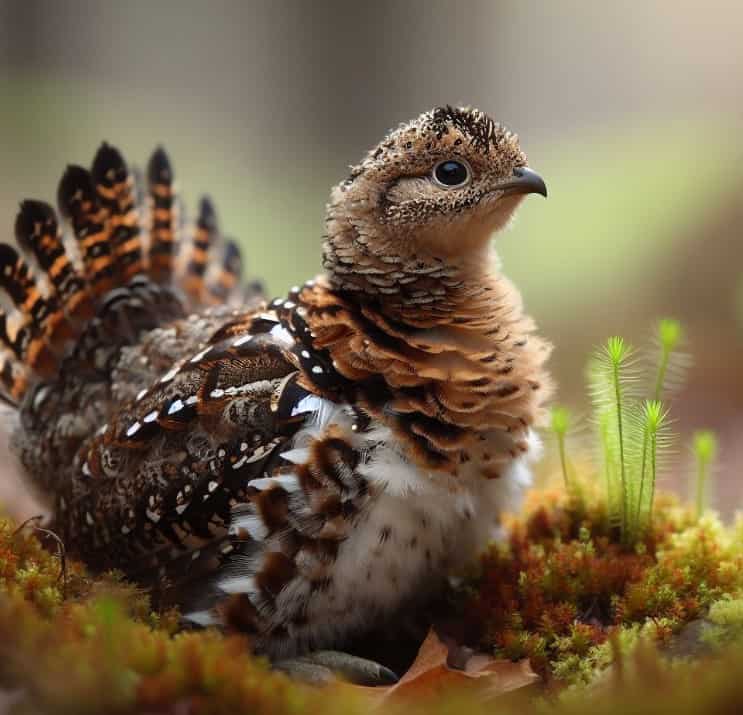
Ruffed Grouse thrive in areas of dense cover where they can take shelter, feed, and nest. Here is a bit more on their habitat and daily routines:
Preferred Habitat
The Ruffed Grouse prefers:
- Areas with a mix of trees, shrubs, and herbaceous plants
- Young forests and woodlands from 5-20 years old
- Aspens, birches, oaks, scattered pines
- Dense thickets of shrubs and saplings
Edge habitats between mature forest and field openings provide ample food and cover resources.
Daily Activities
- Roosting – Spend nights roosting in trees or buried in soft snow
- Foraging – Feed early morning and late afternoon; eat buds, seeds, fruits, insects
- Loafing – Pass midday loafing on ground or perched, blending into surroundings
- Drumming – Males drum April-May to attract females and defend territory
- Nesting – Female builds ground nest and raises chicks alone
They are most active at dawn and dusk. Males drum more frequently before sunrise and after sunset.
Seasonal Shifts
Ruffed Grouse make seasonal adjustments to their diet and habitat use:
Spring – Males drum from log perches; buds and twigs provide food
Summer – Females raise broods in areas with insects and berries
Fall – Fruits and seeds become major part of diet
Winter – Take shelter in dense conifers and feed on buds
Their peaks in activity and habitat shifts are tuned to the cycles of plant food sources.
Conservation Status and Management
Careful management of Ruffed Grouse habitats has maintained healthy populations across Pennsylvania. Here is a look at conservation efforts.
Population Trends
- Estimated 1.5 million Ruffed Grouse in Pennsylvania
- Populations stable long-term; can fluctuate locally
- Declined in Southeast region as forests matured
- Hunting harvests around 150,000 annually
Their numbers appear sustainable overall with regulated hunting seasons.
Conservation Status
- Considered species of least concern nationally
- Managed game bird with hunting seasons and limits
- Focus areas: habitat management, hunter access
Hunting regulations and habitat initiatives by NGOs like the Ruffed Grouse Society aim to conserve the species.
Habitat Management
Some practices that help conserve Ruffed Grouse:
- Allow regrowth of shrubs through planned timber harvests
- Use prescribed fire to maintain open understory
- Plant food sources like dogwoods and fruit trees
- Control invasive plants that degrade habitat quality
Management for young forests with dense cover supports healthy Ruffed Grouse populations while also benefitting many other species.
The Ruffed Grouse remains an important part of Pennsylvania’s natural heritage. Careful stewardship of its habitat and regulated hunting should maintain this unique game bird for future generations. Its familiar presence in the fall woods and spring drumming displays will endure as symbols of the Keystone State.
So in summary, the Ruffed Grouse is well-suited as Pennsylvania’s state game bird thanks to its cultural history, widespread distribution, and ongoing conservation efforts across the state. This overview of its identification, facts, habitat use, and management highlights why this popular game bird was chosen for the designation. The Ruffed Grouse will continue thriving across Pennsylvania’s diverse forests into the future.
More Interesting Facts about Ruffed Grouse
The Ruffed Grouse has many fascinating adaptations and behaviors worth highlighting. Here are some additional interesting facts about Pennsylvania’s state bird:
Unique Physiology
- Have a faster heartbeat than other birds their size to power burst flights
- Lower body temperature by up to 10°F to conserve energy in winter
- Distinctive pear-shaped blood cells help transfer oxygen efficiently
- Can metabolize bitter and even toxic vegetation other birds can’t consume
- Males have comb-like scales on feet for traction in snow and display perches
Ruffed Grouse have specialized cardiovascular and metabolic traits to aid their year-round survival.
Diet and Foraging
- Omnivorous; eat wide range of plant and animal material
- Important foods include catkins, fruits, buds, leaves, twigs, seeds
- Also consume insects, spiders, snails when raising chicks
- Forage mostly on forest floor turning over leaves with feet
- Males roost in trees to browse buds in winter
- Females must get calcium before laying eggs in spring
Their diverse palate allows them to exploit many different food sources.
Breeding and Raising Young
- Males perform drumming display starting in March
- Males may gather at communal courtship areas
- Female selects mate and mating lasts just 2-5 seconds
- Female builds loose grass nest on ground near shrub cover
- Lays average of 11 eggs; incubates for 23-24 days
- Precocial chicks leave nest within hours and feed themselves
- Hen protects chicks until dispersed at 10-12 weeks old
Ruffed Grouse have a swift breeding cycle and chicks mature rapidly.
Predators and Defense
- Well-camouflaged but still vulnerable to many predators
- Common predators: foxes, bobcats, coyotes, hawks, owls
- Rely on stealth to avoid detection; freeze and flush when threatened
- May burst upwards then plummet down in spiraling flight to evade raptors
- Hen uses distraction displays to lure predators from chicks
- If caught, may blow up ruff feathers and strike with feet and wings
Their cryptic behavior and disruptive markings help avoid predators.
Ruffed Grouse have been a key part of Pennsylvania’s forests for millennia. Learning more about their unique biology and behaviors further highlights their suitability as the state bird. Their varied adaptations allow them to survive and even thrive across the diverse habitats in the Keystone State.
Hunting and Preparing Ruffed Grouse
In addition to being Pennsylvania’s state game bird, the Ruffed Grouse is eagerly pursued by hunters across the state each fall. Here are some tips for hunting and cooking these birds:
Tips for Hunting Ruffed Grouse
- Get a small game hunting license – Required for anyone over 16 years old hunting grouse in PA
- Use an appropriate gauge shotgun – 20 or 28 gauge recommended; can use .410 bore
- Choose shot size 6-9 – Larger pellets damage meat; stay with #7-8 lead or #6 steel
- Bring a dog – Flushing dogs like Labradors and spaniels help locate birds
- Focus on dense cover – Target areas like young forests, shrublands, orchards
- Walk slowly and pause frequently – Grouse rely on stealth and hold tight
- Aim ahead of flushing bird – They burst upwards and forward rapidly
- Stay safe – Always be aware of surroundings and hunting partners
With patience and skill, you can harvest these tasty game birds sustainably.
Preparing Ruffed Grouse in the Kitchen
Ruffed Grouse offer light, delicate meat when prepared properly:
- Pluck feathers soon after harvest; remove entrails carefully
- Soak in saltwater brine if needed to tenderize older birds
- Roast or bake whole seasoned birds at 375°F for 50-60 minutes
- Pan fry butterflied breasts – don’t overcook!
- Braise legs and thighs in soups and stews
- Substitute for chicken in casseroles, pot pies, etc.
- Enhance with fruit like apples, cranberries, and cherries
- Pair with wild rice, nuts, and mushrooms
With the right techniques, you can enjoy the rewarding flavor of freshly harvested Ruffed Grouse. They provide a real taste of Pennsylvania’s woods and fields.
Part of the tradition of this state game bird is relishing it on the table after a day out hunting. Follow ethical practices and savor Ruffed Grouse as a local sustainable food.
Conclusion
The Ruffed Grouse holds a special place in Pennsylvania’s cultural and natural heritage. This medium-sized forest grouse was likely chosen as the state bird because it was a staple food source and game animal for the original Native American and colonial settlers. Ruffed Grouse remain common across the state today thanks to ample habitat and careful management of sustainable hunting.
Their distinctive appearance and behaviors, from the thumping spring drumming display to erupting burst flights, make them a unique symbol of the Keystone State’s woodlands. Learning more about how to identify, hunt, and cook Ruffed Grouse allows current generations to connect with centuries-old traditions.
Conservation efforts focused on maintaining the young diverse forests these birds need will ensure Pennsylvanians can enjoy encountering their state bird for many years to come. The persevering Ruffed Grouse epitomizes the resilience and adaptability of wildlife in Pennsylvania.

